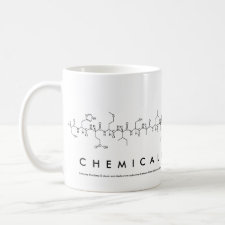
Authors: Bagheri H, Piri-Moghadam H
Article Title: Sol-gel-based molecularly imprinted xerogel for capillary microextraction.
Publication date: 2012
Journal: Analytical and Bioanalytical Chemistry
Volume: 404
Issue: (5)
Page numbers: 1597-1602.
DOI: 10.1007/s00216-012-6206-1
Abstract: A novel molecularly imprinted xerogel (MIX) based on organically modified silica (ORMOSIL) was successfully prepared for on-line capillary microextraction (CME) coupled with high-performance liquid chromatography (HPLC). The sol-gel-based xerogel was prepared using only one precursor and exhibited extensive selectivity towards triazines along with significant thermal and chemical stability. Atrazine was selected as a model template molecule and 3-(trimethoxysilyl)propylmethacrylate (TMSPMA) as a precursor in which the propylmethacrylate moiety was responsible for van der Waals, dipole-dipole, and hydrogen-bond interactions with the template. This moiety plays a key role in creation of selective sites while methoxysilyl groups in TMSPMA acted as crosslinkers between the template and the propylmethacrylate moiety. Moreover, a non-imprinted xerogel (NIX) was also prepared in the absence of the template for evaluating the extraction efficiency of the prepared MIX. Then, the prepared imprinted and non-imprinted xerogels were used for extraction of three selected analytes of triazines class including atrazine, ametryn, and terbutryn, which have rather similar structures. The extraction efficiency of the prepared xerogel for atrazine, the template molecule, was found to be ten times greater than the efficiency achieved by the non-imprinted one. In the meantime, the extraction efficiency ratio of MIX to NIX for ametryn and terbutryn was also rather significant (eight times). Moreover, other compounds from different classes including dicamba, mecoprop, and estriol were also analyzed to evaluate the selectivity of the prepared MIX towards triazines. The ratio of enrichment factors (EF) of MIX to NIX for atrazine, ametryn, terbutryn, dicamba, mecoprop, and estriol were about 10, 8, 8, 2, 2, and 3, respectively. The linearity for the analytes was in the range of 5-700 μg L-1 . Limit of detection was in the range of 1-5 μg L-1 and the RSD% values ( n = 5) were all below 6.6 % at the 20 μg L-1 level. The developed method was also applied to real water samples and the relative recovery percentages obtained for the spiked water samples were from 92 to 104 %. The CME loop, containing the prepared MIX, exhibited a rather long life time due to its remarkable solvent and mechanical stability. Even after 100 runs, no decrease in the peak areas was observed. The developed method could easily provide the possibility of preparing a selective sorbent in a unique way with the lowest possible cost and time
Template and target information: atrazine
Author keywords: Sol-gel technology, Molecularly imprinted xerogel (MIX), Organically modified silica, Capillary microextraction, On-line approach, High-performance liquid chromatography-UV detection



Join the Society for Molecular Imprinting

New items RSS feed
Sign-up for e-mail updates:
Choose between receiving an occasional newsletter or more frequent e-mail alerts.
Click here to go to the sign-up page.
Is your name elemental or peptidic? Enter your name and find out by clicking either of the buttons below!
Other products you may like:
 MIPdatabase
MIPdatabase









